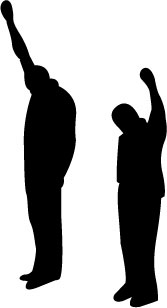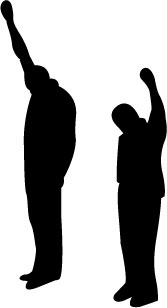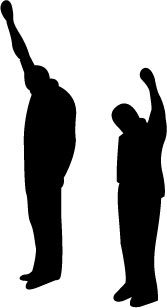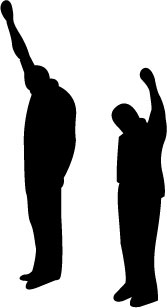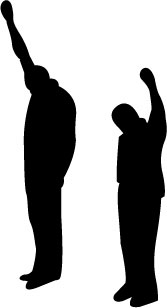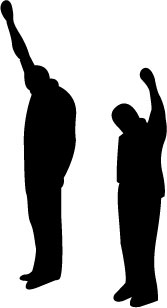syriana (gaghan, 2005) isn’t george clooney’s first liberal propaganda film, but it is his most ambitious attempt to browbeat the converted. rrr felt as if we were home alone with nothing to read but a copy of harpers.
at first rrr held out hopes for something vertovian in the short scenes depicting actions in disparate geographic and class strata of the global oil industry. after all, the montage relates bits of action across vast intervals and organizes them into an unmistakably materialist analysis: u.s. interests in the middle east are driven by corporate desires to exploit the region’s oil and to do it in such a way as to slow the growth of chinese development, among other economic strategies. several more or less recent films dziga it up, weaving together strata into a whole: commercial critics like to mention the gaghan’s traffic (2000), but one might also invoke johan van der keuken’s amsterdam global village.
first difference from vertov: syriana pummels the audience with it’s no doubt correct and necessary analysis, but instead of fists the film stages a series of speeches; e.g., bryan woodman‘s (matt damon) speech to prince nasir (alexander siddig) al-subaai about piping natural gas through iran and cutting out the middlemen, prince nasir’s speech to woodman about his oxford training, various oilmen revealing the nationalist pretenses of their greed, and even shots of executives lusting after oilfields with the affects of seducers. man with a movie camera manifests images from across vast intervals for its audiences to analyze themselves. in it’s urgency to explain global in dire times to it’s no doubt sadly duped spectators and feel good about it, syriana becomes the kind of film even john sayles made fun of. he pointed out that one knows it’s a hollywood movie when one sees some indians and then hears a character say “look, some indians.” instead of seeking to revolutionize its audiences, syriana aims to convince us to vote differently.
second difference from vertov: vertovdevelops his strata of images, the units that function a bit like scenes, in juxtaposed fragments, sometimes as short as single shots. the dialectics of the fragments partially manifest a whole awaiting the viewer’s understanding, inviting the viewer to subalte herself with a new totality. syriana develops its strata as traditional scenes one following the other and weaves them into a tight, pre-comprehended whole, excluding the viewer. clooney and gaghan understand everything for the viewer closing off the sublime revolutionary possibilities of imagination or an understanding not its own.
third difference from vertov: man with a movie camera thinks its own position within the new soviet economy, one can tell by its very title, by the shots of
mikhail kaufman climbing a huge tripod, or laying under a train to get an image, by shots of yelizaveta svilova editing the footage and making single frames come into movement, and by the opposition between the beer hall, the church and the movie theater in the film’s penultimate scene. syriana seems incapable of even wondering about its own status as a film. it can only critique the global economy as if from the outside. are warner brothers and section 8, the production shingle it funds for clooney and steven soderbergh, outside the global economy? section 8’s very existence depends on the success and “largess” of time warner aol to produce its artsy and political films, and that media conglomerate might know as much about lobbying for merger approval as the “fictional” oil companies in the film.
is cloney’s famous estate on lake como not a fact in the global economy, part of the absurd system of privilege we call hollywood? given the montage’s mobility, extending from washington to switzerland to the persian gulf in the twinkling of a lens, and the dependency of such mobility on capital, a little self-analysis might be called for. can we even imagine such “freedom” without entailing the global economy that supports it? without an analysis of the conditions of possibility of the film we are watching, how can we re-imagine cinema and the world? do these people think they’re gods? have they not read satre and landsman?
syriana occasionally lurches toward something like the feel of a taught poltical thriller, and, moreover, it offers the erotic spectacles of george clooney’s beard and the tortuous removal of his fingernails by mussawi (mark strong), but rrr experienced it as so mired in the inability of liberal ideology to question itself, to take responsibility for itself, that the film’s pleasures become alibis. like the rest of the good clintonians, syriana can conceive of no ethics without children. [rrr thanks professor joshua clover for this observation]. woodman starts working closely with prince nasir because his son dies at a the prince’s party, the corporate attorney (jeffrey write) for one of the companies involved in a huge oil merger must become a good son to his broken down father.
one of the story lines involves the radicalization of a migrant pakistani oil-worker (who has a broad u.s. accent according to rrr’s friend sushmita banerji . he is shown to be a good son and a generally sympathetic exploited lumpen boy who becomes a terrorist at islamic school. while this subplot no doubt intends to humanize islamic radicals, it’s so programmatic as to reduce it’s characters to inverted images of demonized terrorists.
once again, hollywood allows us the pleasure of feeling good for feeling bad about the evil in the world, without having to ever wonder whether we or our filmmakers might be the very same evil.
